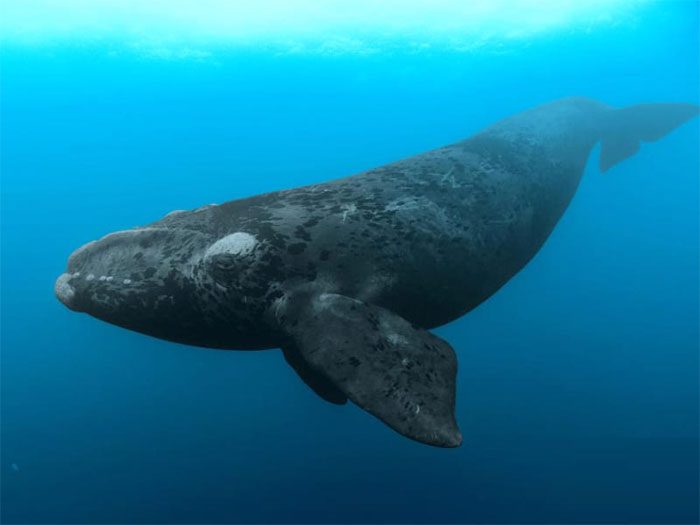The North Atlantic Right Whale is one of the most endangered marine mammals.
Conservationists are hopeful that proposed changes to federal regulations aimed at expanding speed restrictions for vessels along the East Coast of the United States will help save these giant marine creatures that are on the brink of extinction. It is estimated that there are fewer than 350 individuals of this whale species left.
Since 2017, scientists have documented unusual mortality events in North Atlantic Right Whales. Currently, there are fewer than 70 females, and the reproductive rate has decreased due to stress factors affecting the mother whales. By 2035, this species is at risk of extinction.

The population of North Atlantic Right Whales is severely declining.
With a length of nearly 18 meters and a lifespan similar to that of humans, North Atlantic Right Whales were once thought to number as high as 20,000 before commercial whaling drastically reduced their population. This species was considered a suitable target for hunting, as the baleen plates used for filtering food were regarded as a durable, flexible material used before plastics became common, and whale blubber was also suitable for producing cooking oil. Whaling was banned in 1935, leading to a recovery of North Atlantic Right Whales, which peaked at 483 individuals in 2010, before continuing to decline to the present day.
Vessel collisions and entanglement in lobster and crab trapping gear are two leading causes of death for North Atlantic Right Whales. The situation is further complicated by climate change, which is altering the distribution of the zooplankton they feed on.
Proposed changes by the National Oceanic and Atmospheric Administration (NOAA) will expand the boundaries and timing of seasonal speed restrictions along the East Coast and will extend mandatory speed limits of 10 knots or less from vessels over 10.6 meters to those over 20 meters.
This information has faced opposition from the boating and fishing industries, which are concerned it will harm small businesses. On the other hand, conservation groups state that less than 4% of recreational vessels along the Atlantic Coast are 10.6 meters or longer.
NOAA has indicated plans to finalize the regulatory draft by December after reviewing over 90,000 comments. However, even if completed, enforcement remains a concern. A report released by the non-profit organization Oceana on October 19 showed that over 80% of vessels longer than 20 meters offshore of the East Coast are in violation of current regulations, and proposed establishing 10-knot slow zones to protect whales from dangerous collisions. Notably, although there were 9,358 instances of vessels exceeding the speed limit from November 2021 to July 2022, NOAA only penalized 46 cases.
Kathleen Collins, senior campaign director for the marine program at the International Fund for Animal Welfare (IFAW), expressed her pleasure that the government allocated $82 million in the Inflation Reduction Act to promote the protection of species, including the use of technology to ensure compliance with regulations.
However, according to conservationists, technology cannot solve all problems, as monitoring the entire population of whales in real-time is not feasible.
Conservationists argue against permanently tagging North Atlantic Right Whales, as doing so poses a risk of infection, and whales may naturally dislodge the devices within weeks. Jane Davenport, a senior attorney at Defenders of Wildlife, emphasized that the only way forward is to prevent vessel collisions. If Congress does not pass NOAA’s proposal, protecting this whale species will be very difficult.


















































